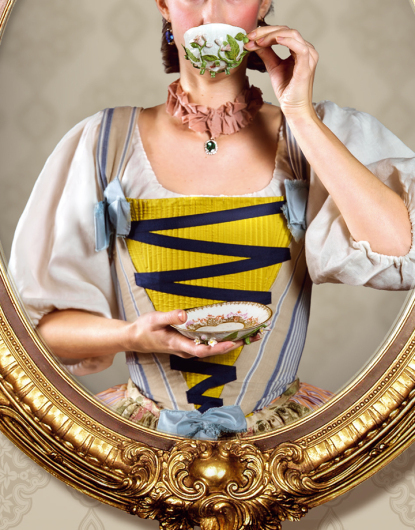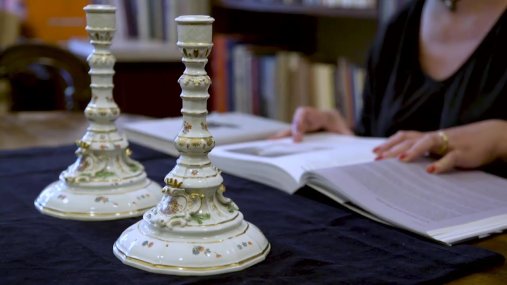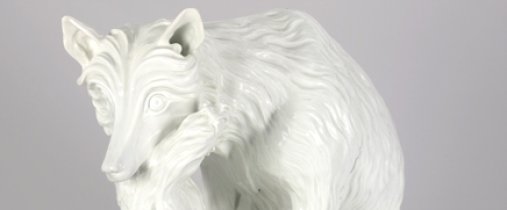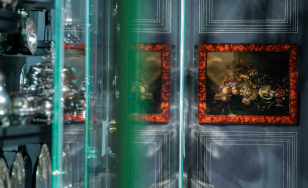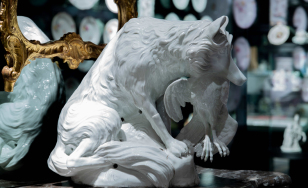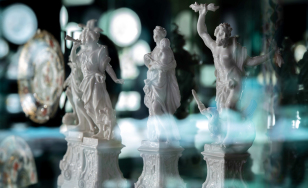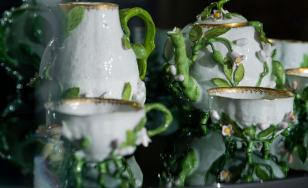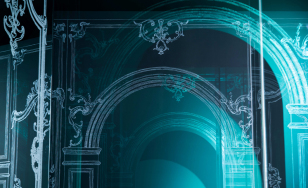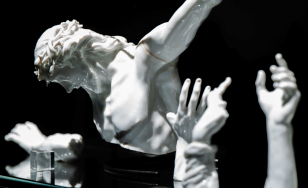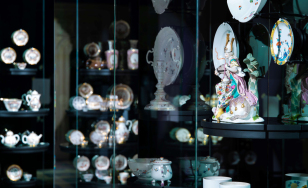The Porcelain Cabinet
Referred to as ‘white gold’, it has become a synonym of the splendour, wealth and uniqueness at royal courts, among the aristocracy and nobility. European porcelain in the 18th century not only equalled its Far Eastern prototypes, but even surpassed them, significantly changing the image of society in which freedom of imagination triumphed, as Prof. Mariusz Karpowicz put it years ago, describing the 18th-century art of the Polish-Lithuanian Commonwealth under the rule of the kings of the Saxon Wettin dynasty. The essence of this triumph – both in the bold, theatrical arrangement and narrative layer – is referenced in the new, permanent exhibition of the Wawel Royal Castle entitled The Porcelain Cabinet. It presents not only the most outstanding, exquisitely crafted porcelain works from the factory in Meissen founded by King Augustus II, but also a wide spectrum of material culture of the 18th century. The collection presented in this way is the most significant one in Central Europe.
King Augustus II the Strong was one of the most famous porcelain collectors of his time. In 1721, an inventory of his collection was prepared, which included approximately 20,000 items, mainly from the Far East. The first 150 Meissen products were donated to the Wawel by Tadeusz Wierzejski, a collector and porcelain expert, in 1966. Since then, the collection has been expanded and currently includes over 400 items.
The admired objects include: elements of the famous tableware created for Aleksander Józef Sułkowski, designed by Johann Joachim Kaendler, modelled on dishes from royal silver service.
The admired objects include: elements of the famous tableware created for Aleksander Józef Sułkowski, designed by Johann Joachim Kaendler, modelled on dishes from royal silver service.

In The Porcelain Cabinet, he also draws attention to vessels decorated in the style of Japanese Kakiemon-style products, distinguished by luminous enamels with typical Eastern motifs: rice fences and sheaves, small flowers resembling stars, pomegranates, pine branches, blossoming plums or chrysanthemums, stylized rocks, mythological creatures such as Hō-ō birds and dragons. Decorations modelled on Japanese products were also used in sets reserved exclusively for court use: ‘with a red lion’, ‘with a yellow lion’ and ‘with red dragons’, representative examples of which can be found in The Porcelain Cabinet.
The exceptional purchase of two candlesticks from the most important and sought-after porcelain service of the Meissen manufactory for the Wawel collection is discussed by the director of the Castle, Prof. Andrzej Betlej, and Dorota Gabryś, curator of the exhibition.
LEVITATING PORCELAIN AND THE ORDER OF THE PUG
The new permanent exhibition at Wawel Castle consists of three rooms arranged in a modern and surprising way in the spaces of the Royal Private Apartments.
The palace interior of the first gallery, with walls with Rococo decorations, allows you to experience the 18th-century atmosphere. We will see here examples of the best Augsburg silver, coat of arms glass from aristocratic manufactories and outstanding paintings and furniture, which will make up a full experience of the highest class of art.

Visitors will be impressed by the space dedicated to Meissen porcelain, arranged in the shape of a cabinet of mirrors in which the presented objects are reflected – literally floating in the showcases thanks to impressive display solutions. We will look at them carefully from every side.
Some of the most valuable acquisitions that enriched the Castle's collection last year are also presented here. Among them there is a life-sized Fox with a hen in its mouth (44.5 cm high) by Gottlieb Kirchner (one of six preserved in the world), as well as a group of charming Pugs.
The Pug – 3D model
The Pugs, which have been present in European courts since the 18th century, enjoying popularity due to their Far Eastern origin. They were bred at the court of the Chinese emperors.
PRECISION AND EXPRESSION

The third gallery of the new exhibition belongs to the masterpiece of Johann Joachim Kaendler - the chief modeller at the Royal Manufactory in Meissen in the 18th century. Here we will see the priceless Crucifixion – a monumental sculptural composition made of porcelain with a religious theme, stunning in its precision of detail and expression. There are only two 18th-century objects of this type preserved in the world. The second group is located in Dresden.
Films about the composition
Jan Kostecki (1949-2024), of the Artistic Crafts Conservation Studio, tells how rescuing and restoring Golgotha to a condition that would allow for display became his life's work.
